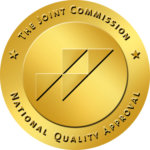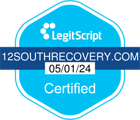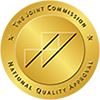The Dangers of Meth
Crystal meth, known for its destructive impact, is often misused in ways many people don’t expect. One shocking question arises: can you eat meth? While smoking and injecting are common methods, eating meth is another route some individuals try. But the consequences can be severe, and not many realize the true dangers. If you or someone you care about has considered this, it is crucial to know the risks involved. Learning the facts could make all the difference in protecting your health.

What Is Meth?
Methamphetamine, commonly called “meth,” is a potent and highly addictive stimulant. It affects the central nervous system, increasing dopamine levels to create an intense sense of euphoria.
Meth comes in various forms, including powder and crystals (“crystal meth”). Users may snort, smoke, inject, or even eat meth to achieve a high. Regardless of how it’s consumed, meth is dangerous and highly addictive.
The meth chemical structure consists of carbon, hydrogen, and nitrogen atoms arranged to interact heavily with neurotransmitters in the brain. This interaction leads to rapid dependency and severe health complications.
Common street names for meth include:
- Crystal
- Ice
- Crank
- Glass
- Speed
Regardless of its form or nickname, meth use can lead to devastating physical and psychological outcomes.
Do People Eat Meth?
Surprisingly yes they do, although it’s less common compared to smoking or injecting.
People might eat meth because:
- They believe it is “safer” than other methods.
- They want to avoid track marks or visible sores.
- They are experimenting without understanding the risks.
Consuming meth is very hazardous and may bring disastrous outcomes for your mind and body. Once meth is swallowed, it travels through the gastrointestinal tract, from where it passes into the blood stream through stomach and intestines. Although more time may elapse before experiencing the effect of meth when compared to injecting or smoking meth, the intoxicating effect is not less severe but far more difficult to predict.
The corrosive impact of meth can cause extensive harm to internal organs, leading to such problems as nausea, excruciating ulcers, and even internal bleeding. Even though the drug gets metabolized within the digestive system, the body somehow still gets to absorb methamphetamine with phenomenal efficiency, releasing strong effects with a tendency to get out of control very quickly. Because the peak is delayed, consumers think they need more and take an excess unknowingly, endangering themselves for overdose and life-threatening medical issues. It is not a better option to eat meth—neither is it a healthy alternative; it is an option that can lead to lifelong medical issues and dependency.
What Happens If You Eat Meth?
The body absorbs it through the gastrointestinal tract. This method of intake brings about delayed but powerful effects. Here’s what typically happens:
Initial Effects:
- A feeling of euphoria
- Heightened energy and alertness
- Suppressed appetite
These sensations may sound “appealing” to some, but the risks greatly outweigh any perceived benefits.
Health Risks:
- Nausea and vomiting
- Extreme dehydration
- Heart palpitations
- Chest pain
- Seizures
- Psychosis (hallucinations, paranoia)
Consuming meth orally may also increase the likelihood of severe stomach issues due to its corrosive nature.
What Are the Side Effects of Eating Meth?
The side effects can vary depending on the dose, the person’s overall health, and how frequently they use meth.
Physical Side Effects:
- Dry mouth
- Tooth decay (meth mouth)
- Severe skin problems (meth sores)
- Weight loss
- Cardiovascular issues
Meth mouth is a particularly notorious side effect, characterized by rotting teeth, gum disease, and significant oral infections.
Psychological Side Effects:
- Intense anxiety
- Insomnia
- Aggressive behavior
- Hallucinations
- Cognitive decline
Long-term users often become known as “meth heads,” a term that highlights the severe physical and mental breakdown linked to chronic meth abuse.
Physically, individuals may experience dramatic weight loss, develop numerous skin sores from persistent scratching, and suffer from extensive dental decay known as meth mouth. Their appearance often becomes gaunt, aged, and visibly unhealthy.
Mentally, meth users frequently endure intense paranoia, hallucinations, violent outbursts, and emotional instability, making everyday functioning extremely difficult. These devastating effects are often long-lasting and, in some cases, irreversible without timely intervention.
Eating meth doesn’t lessen the chance of becoming a meth addict; rather, it introduces additional dangers such as greater damage to the gastrointestinal system, delayed onset of overdose symptoms, and a more profound psychological dependence, making recovery an even steeper climb without professional addiction treatment.
The Dangers of Meth Streams and Meth Mouth
Meth streams refer to the rapid, high-level dopamine release caused by meth use. Over time, this repeated overstimulation burns out dopamine receptors, making it nearly impossible for the brain to experience natural happiness. This depletion not only leads to severe emotional instability and depression but also diminishes a person’s ability to enjoy everyday activities, worsening their dependency on meth to feel any sense of pleasure or motivation.
Meth mouth represents another devastating consequence of meth abuse. Eating meth can accelerate the dental decay process due to reduced saliva production, teeth grinding, acidic chemical exposure, and poor hygiene habits often associated with meth use. Users may experience severe gum disease, rampant cavities, and eventually, tooth loss. Over time, the damage can become so extensive that it affects speech, nutrition, and overall health, requiring costly and painful dental reconstruction surgeries.
Both meth streams and meth mouth are critical warning signs of severe meth addiction that require immediate intervention. Ignoring these signs can lead to irreversible physical and mental health damage, making professional addiction treatment crucial for recovery and long-term healing.
Recognizing Meth Sores and Meth Head Behavior
Meth sores develop when users scratch compulsively at their skin due to the sensation of imaginary bugs crawling under the surface—a symptom known as “formication.” These open sores can quickly become infected, leading to severe skin damage, scarring, and even systemic infections if left untreated. The constant picking often exacerbates existing wounds, making recovery even harder.
A meth head frequently exhibits a range of erratic behaviors that reflect the intense psychological damage caused by methamphetamine use. These behaviors may include uncontrollable twitching, rapid and pressured speech, intense paranoia that strains relationships, and sudden aggressive outbursts that can endanger both the user and those around them.
Recognizing these physical and behavioral warning signs early is critical. Timely intervention and enrollment in a specialized meth treatment program can help prevent long-term damage and guide individuals toward a healthier, more stable future.
Meth Addiction: How It Develops
Meth addiction can develop after only a few uses. The drug alters brain chemistry, creating a powerful craving to experience the high again. Over time, users find it harder to feel pleasure from anything other than meth streams of dopamine released by drug use.
Signs of meth addiction include:
- Obsessive thinking about meth
- Neglecting personal responsibilities
- Severe mood swings
- Drastic changes in appearance
Without professional help, meth addiction can escalate rapidly. Those affected may experience life-threatening health issues, isolation, and even legal problems.
Meth Addiction Treatment: Why Professional Help Matters
At 12 South Recovery, we recognize the profound impact meth addiction has on individuals and families. Effective meth addiction treatment requires more than willpower alone.
Treatment Approaches Include:
- Medical Detox: Safe removal of meth from the body under professional supervision.
- Behavioral Therapy: Techniques like Cognitive Behavioral Therapy (CBT) to reshape harmful thought patterns.
- Group Support: Sharing experiences with peers fosters a strong sense of community.
- Individual Counseling: Addressing underlying mental health issues like trauma or depression.
If you or someone you love is struggling, seeking addiction treatment can offer a path to recovery. It is essential to act quickly to prevent further damage to the body and mind.
Our programs prioritize compassionate care and real-life coping strategies to guide clients towards lasting healing.
Help Is Available at 12 South Recovery
Eating meth is extremely dangerous and can cause irreversible damage to your mind and body. If you’re curious or have questions about meth, know that the risks far outweigh any temporary high.
If you or a loved one is struggling with meth addiction, don’t wait. Reach out to 12 South Recovery Today! Our dedicated team is ready to help you find hope and healing through professional, compassionate addiction treatment.
Together, we can break the cycle of addiction.






































